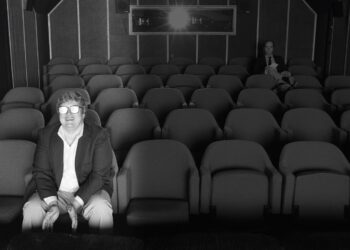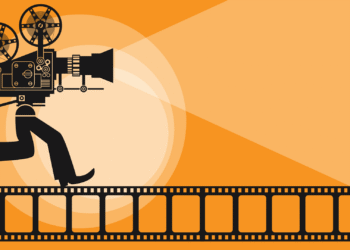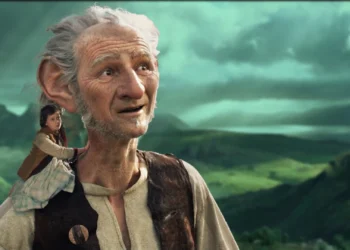Why Do Jump Scares Make Us Scream?
Explore the science behind jump scares and why these moments of terror can be so captivating and even enjoyable.
1. The Paradox of Fear and Pleasure
Our fascination with jump scares stems from a curious psychological paradox: we willingly seek out fear for fun. Studies in affective neuroscience and psychology reveal that the enjoyment of jump scares relies on a precise balance—too mild a fright and the scene feels dull, too intense and it becomes overwhelming or even aversive. The optimal experience occurs in a sweet spot, where the brain is stimulated just enough to feel a rush of adrenaline without crossing into genuine terror. This phenomenon is comparable to riding a roller coaster—our body responds with real fear (racing heart, muscle tension), but our brain contextualizes the experience as safe, allowing us to enjoy the thrill. It’s a complex interplay between emotional arousal and cognitive control that turns fear into entertainment.
2. The Neurological Impact of Jump Scares
Jump scares don’t just affect our emotions—they impact the brain’s functioning at a neurological level. Functional MRI studies have shown that sudden scares activate the amygdala, the brain’s fear center, as well as the insular cortex and periaqueductal gray, which are involved in processing visceral emotional responses. More importantly, these scares temporarily alter connectivity patterns between the amygdala and the prefrontal cortex—the area responsible for decision-making and emotional regulation. This shift may explain the heightened emotional state and subsequent feeling of “release” after the scare subsides. For some, this temporary rewiring provides a cathartic experience, offering a unique way to process emotions in a controlled environment.
3. Individual Differences in Response
Fear responses to jump scares are far from universal. Individual differences in brain chemistry, mental health, and personality traits all play a role in how people experience them. Research shows that individuals with moderate depressive symptoms, for instance, often require more intense stimulation to achieve a comparable emotional response to others. This could be due to blunted emotional reactivity or altered dopamine sensitivity. Conversely, people with heightened anxiety or PTSD may react more strongly or negatively, finding such content distressing rather than enjoyable. Factors such as sensation-seeking tendencies, prior trauma, and even cultural upbringing influence whether a jump scare feels thrilling or traumatic. These differences underline how subjective and complex fear can be.
4. The Therapeutic Potential of Recreational Fear
Surprisingly, controlled fear—such as that experienced in horror films—can offer therapeutic benefits. Psychologists refer to this as “recreational fear,” and it functions similarly to exposure therapy in some contexts. By repeatedly engaging with fear-inducing stimuli in a safe setting, individuals can learn to regulate their emotional responses, gradually becoming less sensitive to triggers. This process may foster emotional resilience and improve coping mechanisms for stress and anxiety. Some therapists and researchers even suggest that horror films might aid certain individuals in confronting unresolved fears or practicing fear regulation in a low-risk environment, although it is not a replacement for clinical treatment.
5. Jump Scares and Brain Activity
Neuroimaging research has also found that jump scares influence patterns of connectivity between key brain regions involved in emotional processing. Specifically, they enhance the interaction between the amygdala and the medial prefrontal cortex (mPFC), a region crucial for fear extinction—the process of learning that a perceived threat is no longer dangerous. This enhanced activity may explain why some people find horror movies exhilarating rather than exhausting. The repeated exposure to a “threat” followed by immediate resolution (when nothing actually harms them) trains the brain to recognize and recover from fear faster. For emotionally healthy individuals, this can promote positive emotional regulation and increased stress tolerance.
Haunting Shadows: The Art of Paranormal Storytelling
Explore how paranormal themes are reshaping horror cinema, offering fresh perspectives on societal anxieties and driving significant box office success.
1. The Resurgence of Fear
Horror films, particularly those exploring paranormal and psychological themes, are experiencing a remarkable resurgence in popularity. Audiences are increasingly drawn to stories that evoke deeper emotional responses—fear, anxiety, vulnerability—rather than relying solely on jump scares or gore. This comeback is not just about entertainment; it reflects a cultural shift where viewers seek cinematic experiences that mirror real-world uncertainties and internal conflicts. Whether it’s the dread of isolation, the fear of the unknown, or the emotional toll of trauma, modern horror allows people to process complex feelings in a safe, immersive environment.
2. From Niche to Mainstream
Once relegated to cult followings and late-night screenings, horror has broken into the mainstream with impressive force. No longer seen as mere pulp entertainment, the genre is now embraced by critics, major studios, and award shows alike. Films like Get Out, Hereditary, and A Quiet Place have not only achieved commercial success but also garnered critical acclaim, showcasing how horror can tackle social commentary, family dynamics, and existential dread. Streaming platforms have further propelled the genre’s reach, making it more accessible to diverse audiences around the world and cementing its place in mainstream entertainment.
3. Factors Behind the Boom
A variety of social and industry factors have contributed to the recent boom in horror. For one, the saturation of superhero films has left audiences craving new, emotionally resonant storytelling. Horror offers a versatile and cost-effective alternative that thrives on originality and tension rather than blockbuster budgets. Moreover, global crises such as the COVID-19 pandemic, rising climate anxiety, and the proliferation of artificial intelligence have provided fertile ground for horror’s thematic exploration. These collective fears are being channeled into stories of contagion, surveillance, loss of control, and the collapse of reality—turning everyday anxieties into compelling cinematic experiences. The genre’s capacity for catharsis and escapism is unmatched, offering viewers both thrills and emotional release.
4. The Future of Fear
With major hits like Sinners and Final Destination: Bloodlines revitalizing interest in supernatural horror, the genre shows no signs of slowing down. Audiences continue to crave fresh takes on ghosts, demons, and psychological torment, especially when these narratives are delivered with emotional depth and visual sophistication. Innovations in sound design, virtual production, and immersive storytelling are expected to further enhance the horror experience. Experts believe the genre will continue to evolve in step with societal fears, exploring new territories such as digital hauntings, AI horror, and climate-induced apocalyptic settings. As long as fear remains a fundamental human emotion, horror will remain a powerful storytelling tool that both unsettles and connects us.













